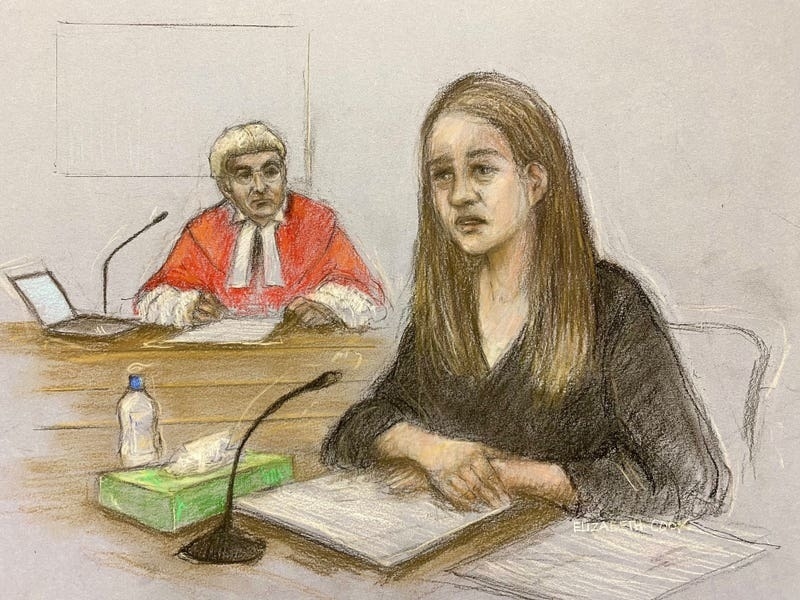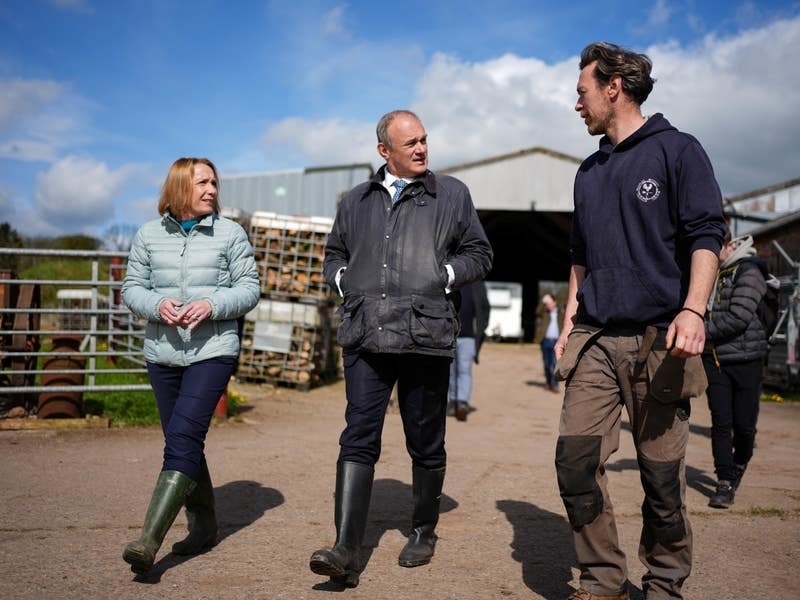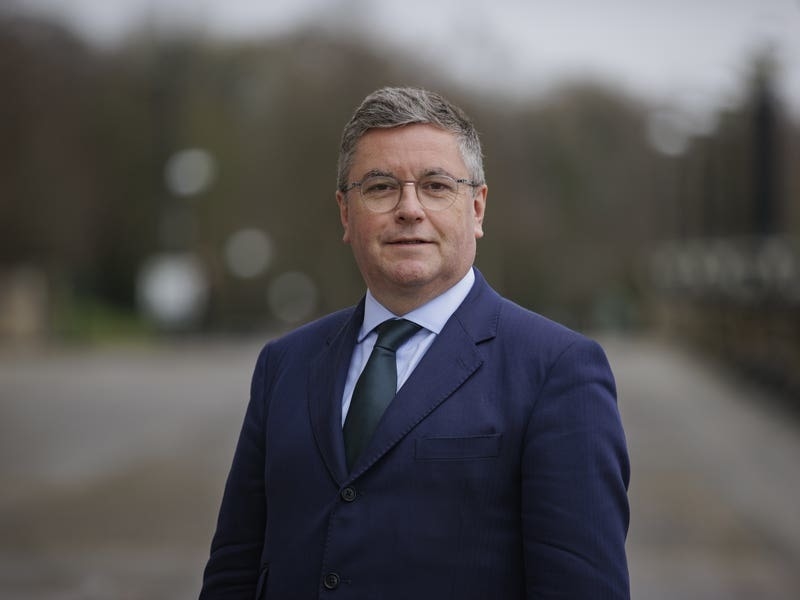A murder-accused nurse photographed a thank you card from the parents of two of her alleged victims as “something to remember”.
Lucy Letby, 33, said it was not unusual for her to take photos of cards she had sent and received.
She is on trial at Manchester Crown Court accused of the murders of seven babies and the attempted murders of 10 others.
It is alleged she murdered Child E with a fatal injection of air into his bloodstream and attempted to murder his brother, Child F, by insulin poisoning in August 2015.
Jurors have heard the boys’ parents brought in a hamper and a ‘thank you’ card to the unit some three months later.
Images of the card were recovered from Letby’s phone following her arrest, the court heard.
Giving evidence on Monday, Letby said she was working a night shift in the early hours of November 20 2015 when she decided to photograph the card at the nurses’ station.
Her barrister Ben Myers KC asked: “Why did you take a photograph of a thank you car from the (Child E and F’s parents)?”
Letby replied: “It was something I wanted to remember. I quite often take photographs of cards I have sent and received.”
Mr Myers said: “Anything unusual in you doing that?”
Letby said: “No.”

Letby said: “Searching for people on Facebook is something I would do. Quite often (the twins’ mother) was on my mind following (Child E and Child F).
Mr Myers said: “Is there anything unusual for you looking more than once on Facebook for someone on your mind?
Letby said: “No, that’s a normal pattern of behaviour for me.”
The defendant, from Hereford, denies all the alleged offences said to have taken place between June 2015 and June 2016.
Letby was next asked about Child G, an extremely premature-born girl, who she is said to have attempted to murder on three separate occasions.
The defendant said she was at the nurses’ station with a colleague in the early hours of September 7 2015 when they heard Child G’s monitor alarm.
Letby said: “We also heard quite a loud retching noise which we thought was unusual so we both went quite quickly into nursery one.
“She was vomiting from her mouth and nose, and struggling to breathe.
“We were quite shocked as looking around the scene there was vomit adjacent to the cotside and on the floor. That is something we had not seen before.”
Breathing support was given “immediately” via a face mask, she said, and the infant was stripped off “to see her abdomen”.
Letby said: “The abdomen was quite firm, distended and red.”
Mr Myers asked: “Had you been asked to look after (Child G) before the vomiting?”
“No,” said Letby
Letby was Child G’s designated nurse on the day shift of September 21 when two more attempts at her life allegedly took place, the court heard.
During the morning Child G had two projectile vomits and briefly stopped breathing, the court heard.
Letby said she heard Child G’s monitor sound while she was in the room with two other babies.
The youngster “stabilised” when she went over, she said, and there was no need for an emergency crash call or a shout for help.
Care of Child G was transferred to a more senior nurse because she “required a high level of care from that point” and Letby had other babies to care for in the same nursery room, the court heard.
Later in the day Child G was behind a screen for her “privacy” after numerous attempts to insert a cannula, Letby said.
Letby went on: “I happened to catch sight behind the screen and saw that (Child G) was on her own.
“She was dusky, blue and not breathing.”
Mr Myers asked: “What did you do when you found her in that position?”
Letby said: “At this point (Child G) was on the procedure trolley, which is a flat bed with no sides, and I put her into the cot and immediately started Neopuffing (breathing support).”
Mr Myers said: “Should she have been left on the procedure trolley?”
Letby said: “No, that’s not the style of practice at all
“I was very concerned about it.
“Three issues really – we would never leave a baby unattended on a procedure trolley, unattended behind a screen or without a monitor on.
“And those three things had happened.”
Letby told the court the neonatal unit was “busy” around the time when she is said to have made two attempts to murder Child H, a baby girl, on September 26 and 27 2015.
Jurors were reminded that she messaged colleagues on September 24 to say the unit was “completely unsafe”.
Mr Myers asked: “What was that referring to?”
Letby said: “The staffing that was on the unit. We had got 18 babies, which is over-capacity. We had capacity for 16. There was a lot going on.”
Mr Myers said: “Had the unit been as busy as this in all the years you worked there?”
Letby said: “No. It was increasingly busy at this period.
“A lot of staff were drained physically and emotionally. The unit was very busy, lots of people were doing additional shifts and changing shifts at the last minute and it did start to have an effect on everybody.”
Letby is said to have murdered Child I, a baby girl, on October 23 2015, at the fourth attempt.
During a night shift on October 13, Letby said she noticed Child I looked “pale” in her cot.
Letby said fellow nurse Ashleigh Hudson was at the workbench in nursery two with her back to the cot while she was stood in the doorway talking to her.
Ms Hudson previously gave evidence that the main light was off in the room and Baby I’s canopy was covering her face.
Letby said: “I could see clearly enough to say that (Child I) was pale in the cot.
“The room was lit by the corridor and (Child I) was in front of that room.
“At no point is any nursery in complete darkness. It is important that you are able to see them visually.
“I was stood in the doorway of the nursery. I could see her face and her hands. She just looked very pale.
“I said to Ashleigh that she looked pale and we both went over and we put more lighting on.
“We pulled back her blankets and started to take her clothing off. She was not breathing properly. She was gasping.”
Asked why a breathing monitor had not gone off, Letby said: “They are programmed to go off if a baby doesn’t breathe for 20 seconds.
“(Child I) was shallow breathing and gasping so I believe she was breathing during that 20-second period. We called for help.”
The trial continues on Tuesday.






